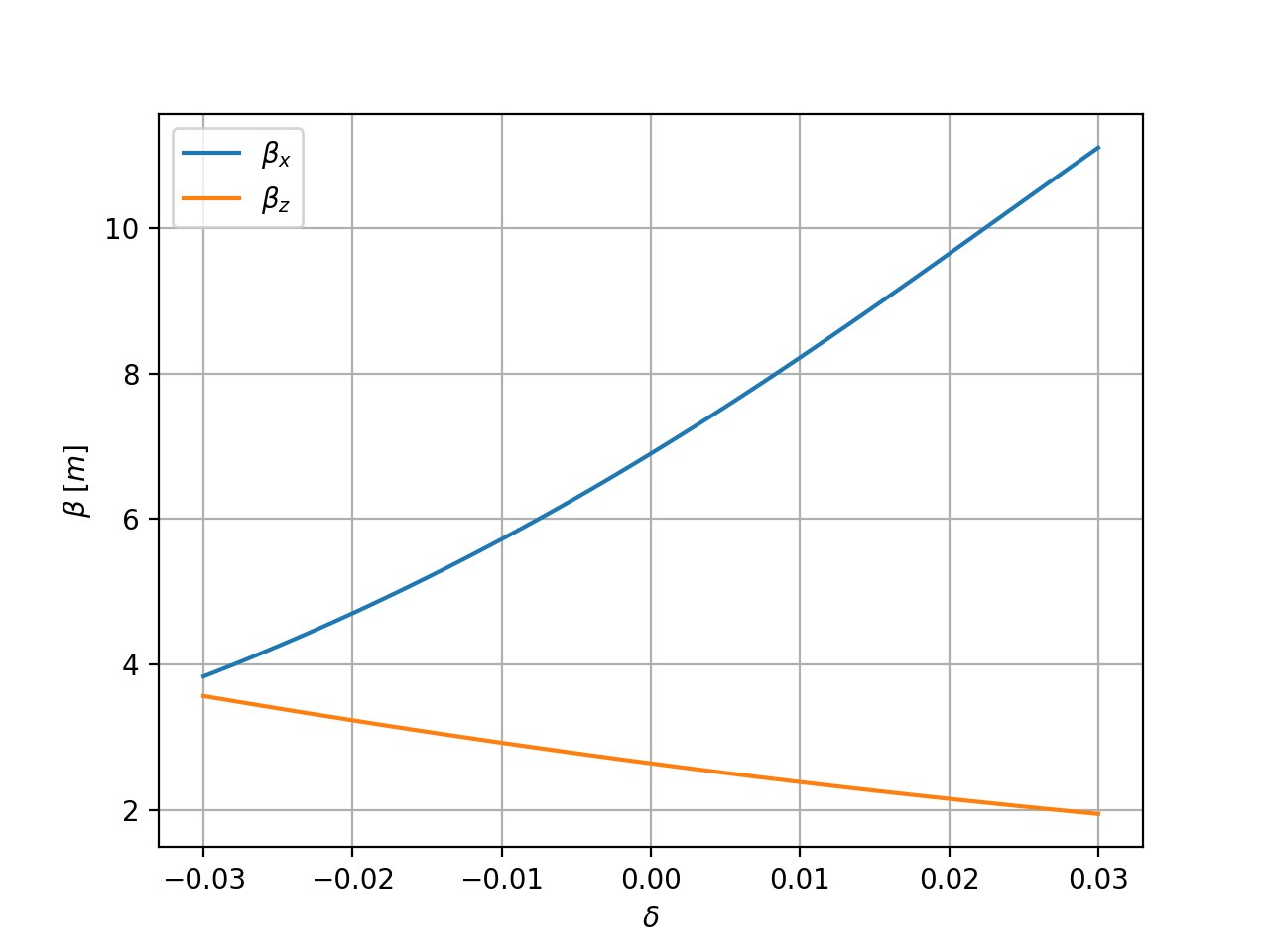at.plot.response#
Plot Observable values as a function of a
Variable.
Functions
|
Plot |
- plot_response(var, rng, obsleft, *obsright, axes=None, xlabel='', ylabel='', **kwargs)[source]#
Plot
Observablevalues as a function of aVariable.- Parameters:
var (VariableBase) – Variable object,
rng (Iterable[float]) – range of variation for the variable,
obsleft (ObservableList) – List of Observables plotted on the left axis. It is recommended to use Observables with scalar values. Otherwise, all the values are plotted but share the same line properties and legend,
obsright (ObservableList) – Optional list of Observables plotted on the right axis.
axes (Axes | None) –
Axesobject in which the figure is plotted. IfNone, a new figure is created.xlabel (str) – x-axis label. Default: variable name.
ylabel (str) – y-axis label. Default:
ObservableList.axis_label.
Additional keyword arguments are transmitted to the
Axescreation function.They apply to the main (left) axis and are ignored when plotting in exising axes:- Keyword Arguments:
title (str) – Plot title,
ylim (tuple) – Y-axis limits,
* – for other keywords see
add_subplot
- Returns:
axes – tuple of
Axes. Contains 2 elements if there is a plot on the right y-axis, 1 element otherwise.
Note
The legend of the plot is controlled by the
Observable.labelattributes. Default values are provided, but labels may explicitly set.Labels may contain LaTeX math code. Example:
"$\beta_x$"will appear as “\(\beta_x\)”.Labels starting with an underscore do not appear in the legend.
Example
Minimal example using only default values:
>>> obsl = at.ObservableList( ... [at.EmittanceObservable("emittances", plane="x")], ... ring=ring, ... ) >>> obsr = at.ObservableList( ... [at.EmittanceObservable("sigma_e")], ... ring=ring, ... ) >>> var = at.AttributeVariable(ring, "energy", name="energy [eV]") >>> ax1, ax2 = at.plot_response( ... var, np.arange(3.0e9, 6.01e9, 0.5e9), obsl, obsr ... ) >>>

Example showing the formatting possibilities by:
using the
Observable.plot_fmtattribute for line formatting,using dual y-axis,
using the ylim and title parameters.
>>> obsleft = at.ObservableList( ... [ ... at.LocalOpticsObservable( ... [0], "beta", plane="x", ... plot_fmt={"linewidth": 3.0, "marker": "o"} ... ), ... at.LocalOpticsObservable([0], "beta", plane="y", plot_fmt="--"), ... ], ... ring=ring, ... ) >>> >>> obsright = at.ObservableList( ... [ ... at.GlobalOpticsObservable("tune", plane="x"), ... at.GlobalOpticsObservable("tune", plane="y"), ... ], ... ring=ring, ... ) >>> >>> var = RefptsVariable( ... "QF1[AE]", "Kn1L", name="QF1 integrated strength", ring=ring ... ) >>> ax = at.plot_response( ... var, ... np.arange(0.732, 0.852, 0.01), ... obsleft, ... obsright, ... ylim=[0.0, 10.0], ... title="Example of plot_response", ... )

Example varying an evaluation parameter:
>>> obs = at.ObservableList( ... [ ... at.LocalOpticsObservable([0], "beta", plane="x"), ... at.LocalOpticsObservable([0], "beta", plane="y"), ... ], ... ring=ring, ... dp=0.0, ... ) >>> var = at.EvaluationVariable(obsleft, "dp", name=r"$\delta$") >>> ax = at.plot_response(var, np.arange(-0.03, 0.0301, 0.001), obsleft)


